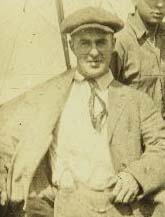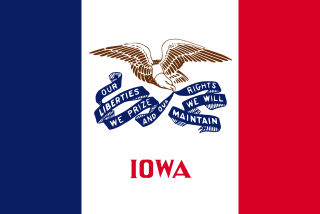Related Research Articles

The Curtiss JN "Jenny" was a series of biplanes built by the Glenn Curtiss Aeroplane Company of Hammondsport, New York, later the Curtiss Aeroplane and Motor Company. Although the Curtiss JN series was originally produced as a training aircraft for the US Army, the "Jenny" continued after World War I as a civilian aircraft, as it became the "backbone of American postwar [civil] aviation".
This is a list of aviation-related events during the 19th century :

The Naval Aircraft Factory N3N was an American tandem-seat, open cockpit, primary training biplane aircraft built by the Naval Aircraft Factory (NAF) in Philadelphia, Pennsylvania, during the 1930s and early 1940s.

Otto William Timm was a California-based barnstormer and aircraft manufacturer of German descent. Charles Lindbergh's first flight was flown by Timm. Timm partnered at times with his brother Wally Timm who did a lot of flying for the nascent Hollywood movie industry.

The de Havilland DH.50 was a 1920s British large single-engined biplane transport built by de Havilland at Stag Lane Aerodrome, Edgware, and licence-built in Australia, Belgium, and Czechoslovakia.

William C. Robinson was an early American inventor and aviator.

The Avro 562 Avis was a two-seat light biplane designed and built by A.V.Roe and Company Limited at Hamble for the 1924 Lympne Light Aeroplane Trials.

The Wright XF3W was an American racing aircraft built by Wright Aeronautical for the United States Navy.

The General Aeroplane Company was Detroit's first commercial airplane builder. GAC built three types of aircraft during the First World War and operated a flying school. The aircraft were the Verville Flying Boat, the Gamma S biplane with floats (floatplane), and the Gamma L biplane with wheels. All had engine installations driving pusher propellers.

The Bristol Scout E and F were a British single-seat biplane fighters built in 1916 to use newer and more powerful engines. It was initially powered by the Sunbeam Arab, but the third prototype was used as a testbed for the Cosmos Mercury, marking the start of Roy Fedden's association with the Bristol Aeroplane Company. The Armistice ended hopes of production.
Maryland Pressed Steel Company was an American aircraft manufacturer of the Bellanca CD, and CE aircraft.

The Bellanca CE was the first aircraft designed for the Maryland Pressed Steel Company, by the aircraft designer Giuseppe Mario Bellanca. The aircraft was also called the Bellanca C.E. or the "CE Tractor Biplane".

The Bates Monoplane was a pioneering aircraft built by Carl Sterling Bates in 1911.

The United States capital, Washington, D.C., has been the site of several events in the nation's history of aviation, beginning from the time of the American Civil War, often for the purpose of promoting the adoption of new aeronautical technologies by the government. It has also been home to several governmental and civilian aircraft manufacturers and aviation organizations, and several aerospace contractors.
Charles B. Kirkham (1882–1969) was an American engineer of aircraft engines and aircraft.
The Timm Aircoach, also called the Timm Coach and the Golden Shell Special, was a custom-built, high-capacity, high altitude aircraft for charter flights.

Wally Timm was an American aircraft designer, pilot and manufacturer.

Iowa's first aeronautical event was the flight of a balloon around 1850 by Professor Silas Brooks. Iowa's first powered flight was made by Art J. Hartman in his Iowa built, Hartman monoplane on 10 May 1910.
The Davenport BD-2 Nuggit (sic) is an American biplane developed for homebuilt construction.

The pioneer era of aviation was the period of aviation history between the first successful powered flight, generally accepted to have been made by the Wright Brothers on 17 December 1903, and the outbreak of the First World War in August 1914.
References
- ↑ Hollis LeRoy Muller. Manual of military aviation: prepared for the use of personnel of aircraft. p. 482.
- ↑ Howard Lee Scamehorn. Balloons to Jets: A Century of Aeronautics in Illinois, 1855-1955. p. 71.
- ↑ Aeronautics: 8. 15 January 1914.
{{cite journal}}: Missing or empty|title=(help) - ↑ Glenn Dale Angle. Airplane Engine Encyclopedia. p. 429.
- ↑ Aerial Age: 330. 29 May 1916.
{{cite journal}}: Missing or empty|title=(help) - ↑ "Otto Timm" . Retrieved 8 April 2012.
- ↑ Our Navy, the Standard Publication of the U.S. Navy, Volume 10. p. 68.
- ↑ Bill Menner. Grinnell in Vintage Postcards. p. 110.
- ↑ Aerial Age: 81. 3 April 1916.
{{cite journal}}: Missing or empty|title=(help) - ↑ Scott M. Fisher. Eastern Iowa's Aviation Heritage. p. 23.
- ↑ Aerial Age: 783. 13 August 1917.
{{cite journal}}: Missing or empty|title=(help) - ↑ Janice Beck Stock. Amazing Iowa. p. 33.